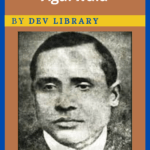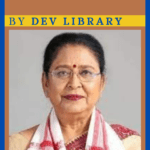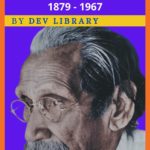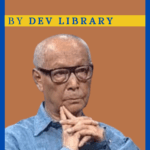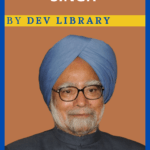Many young men and women from different parts of India jumped into the nationwide freedom movement against the British. Many young men and women actively participated in this freedom movement in the interest of the country and created a sense of patriotism. A powerful fighter of the freedom struggle against the British, Lala Lajpat Rai is one of the notable people who played a very important role in India’s freedom struggle. Lala Lajpat Rai’s uncompromising stance and courage gave a new impetus to the freedom movement that started against the British. He is a symbol of patriotism, sacrifice and courage, he is not a person he is an event that reminds us of the selfless sacrifices made for the country at every time. Lala Lajpat Rai, who highlighted the excellent philosophy of patriotism, was a lawyer in a profession parallel to a politician. Lala Lajpat Rai who also attempted to make the general public aware, with pen is one of the most popular tri-murti as Lal Pal Bal.

Biography of Lala Lajpat Rai
| Name | Lala Lajpat Rai[1] |
| Date of Birth | 28 January 1865 |
| Place of Birth | Dhurike, Ludhiana District (British Ruled India), Present Punjab, India |
| Father’s Name | Munchi Radha Krishna Azad |
| Mother’s Name | Gulav Devi |
| Education | 1/ Government Higher Secondary School, Rewari. 2/ Government College, Lahore (Law Education). |
| Death | November 17,1928. |
Early Life
Lala Lajpat Rai was born on January 28,1865 in a Jain family in Dhurike, Ludhiana district of Uttar Pradesh. His father’s name was Munchi Radha Krishna and his mother’s name was Gulav Devi. It may be recalled that Lala Lajpat Rai’s father by profession was a teacher at Urdu and Persian government schools.
He spent most of his childhood in Dhudike, Ludhiana district of Uttar Pradesh, but did his early education at the Government Higher Secondary School in Rewari. Because his father had to moved to Rewari in the late 1870s. Importantly, his father was appointed as the Urdu teacher in Government Higher Secondary School where Rai took early education.
It may be recalled that after completing his early education, Lala Lajpat Rai enrolled in the Government College of Lahore in 1880 to pursue law. Importantly, he got close to future freedom fighters Mahatma Hansraj and Pandit Guru Dutta during his studies at this college. Importantly, Rai was influenced during his studies towards the Hindu reform movement led by Swami Dayanand Saraswati. Not only this but Lala Lajpat Rai established Arya Samaj in 1877, and fills in as a member of Lahore and takes over as foundation editor of Arya Gazette. It may be recalled that Rai was deeply attracted towards the ideology of Hinduism during his study. He went above nationalism and considered Hinduism as the basis of Indian lifestyle.
Importantly, in 1886, Rai’s father was posted to Hisar in shake of his profession and after completing his formal education at this place, Lala Lajpat Rai started practicing law and also took over as a founding member of Hisar’s Lawyers’ Council. In addition, in 1886, Lala Lajpat Rai with advocate Babu Chudamani along with lawyer’s brother Chandu Lal Tayal, Hari Lal Tayal, Balmukunda Tayal, Dr° Ramji Lal Hooda, Dr° Dhani Ram, Pandit Murari Lal of Arya Samaj, Seth Charu Ram Jat, founder of Hisar Caste School, along with Dev Raj Sandhi established a branch of The Indian National Congress in Hisar and also established a branch of Arya Samaj.
Also Read : Biography of Mahatma Gandhi
Achievements
It is important to note that Lala Lajpat Rai, who played an important role in establishing the Indian National Congress branch in Hisar, participated as an honorary representative along with Babu Chudamani, Lala Sabil Das, Seth Gauri Shankar at the annual session of the Indian National Congress held in Allahabad in1889. Subsequently, in1892, Rai was indirectly involved in India’s struggle for independence against the British in parallel with the commencement of practice in the Supreme Court of Lahore. At that time he was associated with the news service as well as he started writing in several newspapers including The Tribune etc. Importantly, Lala Lajpat Rai, who was involved in various social activities, extended a helping hand to Mahatma Hansraj in establishing a Dayanand Anglo Vedic School in Lahore in 1886.
It may be recalled that Lala Lajpat Rai, like other fighters in the interest of the country, left his profession and participated in the movement in a strong manner and travelled to various places in the interest of the country as the freedom movement against the British started in 1914. It may be recalled that he visited Britain and visited the US in 1917 and played an important role in establishing Indian Home Rule League there. Importantly, Rai, who visited various parts of the world in terms of achieving freedom and international support from various nations for India’s independence, also played an important role in establishing the Young India and Hindustan Information Services Association along with publishing a monthly magazine in parallel with the establishment of Indian Home Rule League in the US. Importantly, Lala Lajpat Rai, who returned to India from the United States in 1919 during World War I, also played an important role in the Non-Cooperation Movement led by the Congress in parallel with leading the special session of the Congress held at that time.
A veteran leader who actively participated in India’s freedom movement led by the Hindu Mahasabha, Hindu Reform movement and Arya Samaj, Lala Lajpat Rai’s biography was a source of inspiration for the new generation of youth.
Lala Lajpat Rai, popularly known as Punjab Kesari, was also closely associated with the activities of Punjab National Bank, Laxmi Insurance Company and also served as the head of Laxmi Insurance Company. Importantly, social activist Lala Lajpat Rai’s mother who died of tuberculosis, took steps to set up a tuberculosis hospital for women to protect them from tuberculosis in his mother Gulav Devi memory and the hospital was opened on July 17,1934 under the name Gulav Devi Memorial Hospital. It may be recalled that at present the hospital located in Pakistan has a system of treating more than 2000 patients.
Lala Lajpat Rai’s published books have appeared in various newspapers and magazines in Hindi, Punjabi, Urdu, English language at different times. Lala Lajpat Rai’s published books are – The Story of My Deportation published in 1908, Arya Samaj published in 1915, The United States of America published in 1916: A Hindu’s Impression, published in 1928, The problem of National Education in India published in 1928, published in 1920 Unhappy India, 1917 England’s Debt to India etc. He also wrote biographies of Mazzini, Garibaldi, Shivaji and Sri Krishna
Conclusion
Importantly, Lala Lajpat Rai participated in the protest against the Simon Commission on October 30, 1928. But baton charge on the protest crowd at the protest site by the superintendent of police James A Scott led to serious injuries to other protesters as well as Lala Lajpat. As a result he died on November 17,1928. Lala Lajpat Rai’s political honesty, sacrifice will always be alive in India’s freedom struggle.
Various steps have been taken to preserve the memory of Rai and spread his ideals. It may be recalled that in1959 a group of Social Workers from Punjab launched the Lala Lajpat Roy Trust. In addition, the Haryana government established a Veterinary and Veterinary University in 2010 in Lala Lajpat Roy memory.
Lala Lajpat Rai, a brave, outspoken personality, has created a golden chapter in Indian national history for future generations through his work to establish an ideal in Indian society through duty, patriotism and social service. Lajpat Rai’s intellectual approach, hard work and humility as a writer, politician, a man of great personality who contributed to social life as a revolutionary, is a circuit for his gentle behaviour.
FAQ
1. When and where was Lala Lajpat Rai born?
Ans: He was born on 28 January1865 at Dhurike, Ludhiana District (British Ruled India), Present Punjab, India.
2. Who is known as the Lion of India?
Ans: Lala Lajpat Rai is known as the Lion of India.
3. By what name Lala Lajpat Rai was popularly known as?
Ans: Rai was popularly known as Punjab Kesari.
4. Name some books written by Lala Lajpat Rai?
Ans: Some books written by Lala Lajpat Rai are – The Story of My Deportation published in 1908, Arya Samaj published in 1915, The United States of America published in 1916: A Hindu’s Impression, published in 1928, The problem of National Education in India published in 1928, published in 1920 Unhappy India, 1917 England’s Debt to India etc.
5. When did Lala Lajpat Rai participated in the protest against the Simon Commission?
Ans: Lala Lajpat Rai participated in the protest against the Simon Commission on October 30, 1928.
6. When did Lala Lajpat Rai died?
Ans: Rai died on November 17,1928.

Hi, I’m Dev Kirtonia, Founder & CEO of Dev Library. A website that provides all SCERT, NCERT 3 to 12, and BA, B.com, B.Sc, and Computer Science with Post Graduate Notes & Suggestions, Novel, eBooks, Biography, Quotes, Study Materials, and more.


